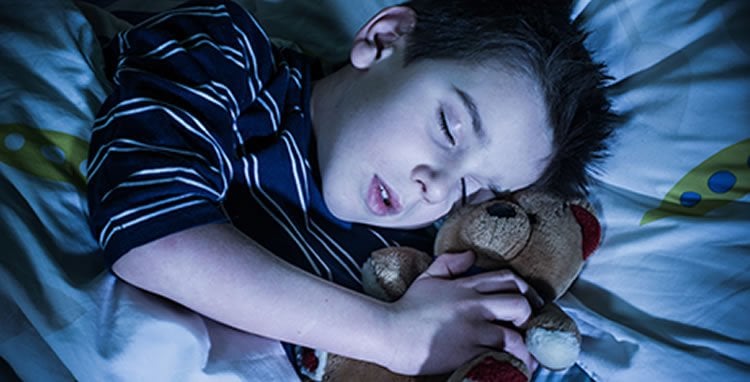Children commonly snore from time to time and that is often harmless. But children with frequent snoring and breathing problems during sleep have an increased risk of having trouble concentrating and learning difficulties. A newly published study from Sahlgrenska Academy shows that many parents of children that snore are not aware of the possible risks associated with frequent snoring in children.
Periodic snoring in children is not unusual. But, when snoring becomes persistent and the child experiences sleep apnea, sleep quality is affected. This, in turn, can lead to problems with daytime tiredness, concentration and learning difficulties, bedwetting and delayed growth.
5 percent snored
A Swedish population study, that studied the occurrence of snoring and sleep apnea in 1300 children ranging in age from 0-11 years, found that approximately 5 percent of the examined children snored several times a week. Despite pronounced snoring, only about one third of the snoring children had sought medical help for their problem.
Reduced quality of life
“Children with persistent snoring often have a reduced quality of life. In particular, this applies to children who have sleep apnea,” says Gunnhildur Gudnadottir, Researcher at Sahlgrenska Academy.
“The study shows that awareness is low regarding the negative effects of breathing disturbances during sleep on children’s health and that most parents are not aware that this is something that should be investigated. An obvious result of the study is that we must consider how parents are given information about the condition and where they can seek help” says Gunnhildur Gudnadottir.
Can often be cured
The most common reason for snoring in children are enlarged tonsils or adenoids. In these cases, snoring can often be cured or reduced with surgery.

The Gothenburg researchers’ advice is that children with severe recurrent snoring and sleep apnea should turn to a healthcare center for medical evaluation.
Source: Johanna Hillgren – University of Gothenburg
Image Source: The image is adapted from the University of Gothenburg press release.
Original Research: Abstract for “Healthcare provider contact for children with symptoms of sleep-disordered breathing: a population survey” by G Gudnadottir, A Ehnhage, M Bende, M Andersson, A Cervin, L O Cardell and J Hellgren in The Journal of Laryngology & Otology. Published online December 17 2015 doi:10.1017/S0022215115003370
Abstract
Healthcare provider contact for children with symptoms of sleep-disordered breathing: a population survey
Background: Symptoms of sleep-disordered breathing in children, such as frequent snoring, apnoea and choking, may lead to health problems if untreated. The caregiver’s level of awareness of these symptoms has been poorly studied. This study aimed to study healthcare provider contact related to sleep-disordered breathing symptoms in a population of children aged 0–11 years.
Methods: A total of 1320 children were randomly selected from a national database that included all children living in Sweden. Caregivers answered a questionnaire about sleep-disordered breathing symptoms during the last month and healthcare provider contact related to these symptoms.
Results: A total of 754 answers were received. The prevalence of sleep-disordered breathing symptoms was 4.8 per cent. Of this subgroup, 69 per cent had not been in contact with a healthcare provider regarding their symptoms.
Conclusion: This study shows that sleep-disordered breathing in children is underestimated and that there is a need to increase caregiver and healthcare provider awareness of sleep-disordered breathing in children.
“Healthcare provider contact for children with symptoms of sleep-disordered breathing: a population survey” by G Gudnadottir, A Ehnhage, M Bende, M Andersson, A Cervin, L O Cardell and J Hellgren in The Journal of Laryngology & Otology. Published online December 17 2015 doi:10.1017/S0022215115003370






